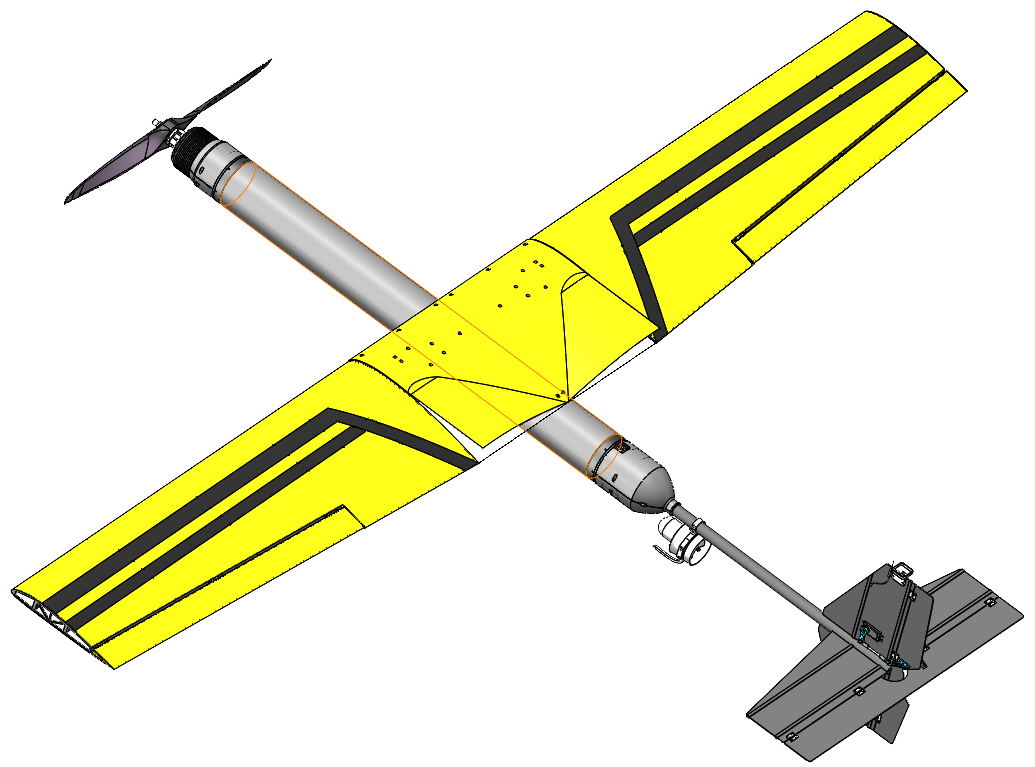Chinese researchers successfully tested two submersible cross-media vehicles or ‘flying submarines’ that can travel underwater and cross over into the air and fly.
The WeChat Public account of Harbin Engineering University released a video of these two submersible cross-media vehicles named ‘Longbow 1’ and ‘Longbow 2’ emerging from the water and embarking on a flight.
The state-level Key Laboratory of Underwater Robotics of Harbin Engineering University developed the two vehicles. The Longbow 1 has a fixed-wing structure, and the Longbow 2 has a folding-wing design.
The two drones can carry a payload of one kilogram and dive underwater down to 100 meters.
#China Harbin Engineering University announced on Nov 4 that test flights of 长弓1号 (Changgong / Longbow 1) and 长弓2号 (Changgong / Longbow 2) — two transmedium drones that can cruise underwater and fly in the air — had been successfully completed
pic.twitter.com/2G6mqEiVO1— the stranger (@thestranger515) November 7, 2022
The tests were conducted in October at the Longfengshan Reservoir in Wuchang City. After navigating underwater for more than 40 seconds, the Longbow drones dived into the water, emerged above it, adjusted their flight altitude, and took off.
The entire process was completely autonomous.
“Air and water are two completely different media. The density of water is nearly 800 times greater than that of air. When a submersible trans-medium vehicle operates in two completely different environmental media, it will be affected by wind, waves, and currents. Combined interference, the external environmental force, and the corresponding dynamic response are significantly different.” said Wang Baoxu, a master’s student.
The team at Harbin Engineering University conducted numerous simulation experiments using the CFD technology to evaluate their designs of the Longbow 1 and Longbow 2 based on the various performance parameters required in air and water.

Sun Xiangren, the technical director of the project and a doctoral student, said that to withstand pressure underwater, the deeper the aircraft dives, the heavier the material used to build the aircraft will be. If the fuselage is too heavy, it will not be able to take off quickly.
So, the team employed several methods to reduce the aircraft’s weight.
“We not only use a new type of carbon fiber composite material to replace ordinary metal but also try to reduce the weight of the aircraft in the structural design,” said Xiangren.
The team designed the folding wing structure of Longbow-2 specifically to realize an improved cross-media capability, but this design presented a challenge to maintain the stable altitude of the aircraft.

The Longbow-2’s foldable wing structure has undergone as many as nine modifications to address the issue of stable flight. During the test, the Longbow-2 could come out of the water, unfold its wings and take off successfully in less than six seconds.
China Wants Flying Submarines To Break Through Enemy Air Defenses
As EurAsian Times reported earlier, several flying submarines, also referred to as ‘transmedia vessels,’ are currently being developed in China.
In August, a research team from Nanjing University of Aeronautics and Astronautics in eastern China claimed to have built and tested a prototype submarine drone capable of flying in the air at a 120 km/hr speed.
According to an unnamed researcher from Northwestern Polytechnical University studying similar technology, these ‘transmedia vessels’ are mainly for military applications; some can even fly at supersonic speeds.
China views these transmedia vessels as one of the cheapest and most effective means of destroying the defense system of an aircraft carrier fleet, according to Ji Wanfeng, a professor at the Naval Aviation University in Yantai, Shandong province.
Wanfeng and his colleagues estimate that the multilayered defense system of modern warships can shoot down around half of the incoming threats, such as planes, missiles, or traditional drones.

However, a transmedia vessel can break through these layers of defenses, as it can dive underwater when detected by radar and resurface to evade the ship’s sonar system. According to Wanfeng, only a handful of these drones could confuse or even overwhelm a warship’s computer.
Wanfeng and his team noted in a paper published in the Chinese journal Electronics Optics & Control in July that a transmedia vessel launched from a distance of 100 kilometers had a survival rate of close to 100% if it could fly at a speed of more than 150 km/hr.
Such drones “can achieve efficient strikes against the enemy’s key targets. It will surely become a powerful supplement to the Chinese Navy’s existing equipment, combat methods, and tactics,” Wanfeng’s paper said.
- Contact the author at tanmaykadam700(at)gmail.com
- Follow EurAsian Times on Google News




